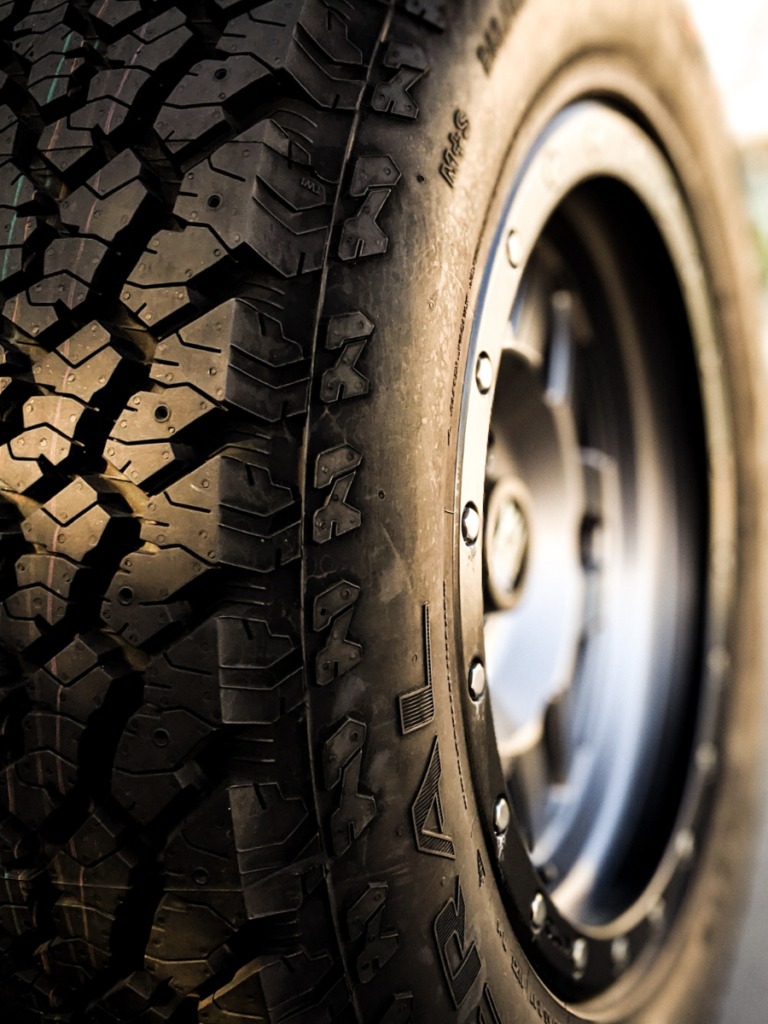
When is it Time To Change my Tires?
Fall is just about here which means Winter is right around the corner. Many people will soon be changing their regular tires for snow tires in preparation for the inevitable Winter road conditions. However, you should be thinking about the condition of your tires more than just this time of year. Too often people wait until something bad happens due to the quality of their tires and it’s too late. Your tires need to perform well and provide a safe grip in all weather conditions. In order to achieve this, your tires will require routine maintenance. We wanted to provide some key signs that it’s time to change your tires for those who may not know.
Tread Depth
What constitutes a worn-down tire? Well, in most states, you need to change your tires when they have about 2/32” of remaining tread depth, which is the distance between the base of the grooves and the top of the tread. Obviously, tires that receive more wear from inclement weather conditions, should be changed before you reach this point.
To test this out, take a penny with Lincoln on one side and place him head down into the tread. If you can see all of his head, it is time for you to purchase new tires.
Tread Wear
You will know it is time to check the tread depth when your tread pattern on your tire has wear bars on it. These features will help you determine when it is time to change you tires. Every tire sold in North America have wear bars, and you may also notice that it includes a treadwear grade number printed on the sidewall. The treadwear grades are given to tires by the manufacturer to indicate their expected lifetime. Higher numbers indicate a longer longevity, but also your driving habits greatly impact the actual results. Example, if you brake hard or tow heavy equipment, you should not rely too heavily on that number.
Rubber Cracks
Rubber cracks are a major factor in your tires’ overall condition. Rough conditions, like particles on the road and extreme temperatures, erode the rubber, making the cracks inevitable. Tires do have some anti-aging chemicals, but this protection does not last forever. You might have heard of weather or Ozone cracks before. These are basically surface cracks that are only visible on the sidewalls and the base of the tread grooves. These cracks do not cause a problem, but it will be time to change your tires when they descend deeper into the rubber. You can prevent cracking to some extent by driving regularly to help maintain the rubber’s elasticity. Poor maintenance, as well as under and over inflation will lead to cracks sooner, so it is important to maintain the proper inflation volume for your tires.

Bubbles, Blisters, and Bulger
Keep an eye out for any bulges or bubbles in your tires as these are direct signs of a serious issue and you need to replace the affected tire immediately. Bubbles indicate severe damage to the inner lining of the tire that can take place if you hit a curb or experience impact. Make sure to check the warranty if your tires are new to possibly avoid additional expenses.
Vibration
You might have experienced some sort of vibration when driving your car when you recently changed or rotated your tires. Never ignore any kind of vibration from your car, no matter how fast or slow you are driving. Typically, you sense vibration through the steering wheel or the front portion of your car. This is quite common after servicing your tires.
If you experience any kind of vibration, you should bring to your mechanic or check the following areas:
Lug nuts– check their tightness
Tire pressure– ensure each tire is inflated to recommended pressure to help fix vibration issue
The following should be performed by a professional to ensure everything is in order:
Centering ring– it may not be installed correctly
Balancing weights– they may be amiss
Tire and wheel balance– installers should conduct a balance check of the ties and wheels after a rotation or tire change
Preexisting issues– another cause of vibrations may be preexisting issues with one or more of your tires.
Age and Season
To be safe, always pay attention to the age of your tires. As your tires age, the treads can separate from the tire, leading to reduced traction. Persistent exposure to heat, the way you store your car, and how it is utilized can also impact the quality and lifetime of your tires. Not all tires are meant to handle the same number of miles, taking your vehicle to get regular rotations will improve longevity. You may think your tires look great and still have good grip, but ensure you have tires best suited for the conditions of the varying seasons you endure. This might mean you have two sets of sites- those that perform better during dry seasons and those are a designed for better performance in wet seasons.
When did you change out your tires last? To maintain safe driving, never ignore these signs, and take care of your tires with regular checks with your mechanic.
If you are looking for new tires, Premier Auto & Truck Parts carries reliable used tires- our inventory is constantly changing, but we see a wide variety of tires come through our doors! Contact us today to see if we have tires for you!
